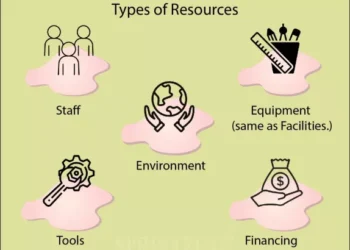Productivity is essential in the workplace. Without optimal productivity, businesses are sure to experience losses on numerous levels. Those range from decreased employee morale and higher turnover rates to reduced quality and faltering customer satisfaction rates. Workflow optimization can help solve those problems and many others for businesses that need a boost in their productivity, and business process management software is one of the cornerstones of success.
Assess Current Workflows
One of the first and most important measures in workflow optimization is to assess the workflows that are currently in place. Look for bottlenecks, excessive redundancies, inefficient practices, and other issues that hamper productivity. This entails laying out each step of the company’s workflow, fully understanding how each one affects the next, and determining where delays and hindrances are most prominent.
BPM software options can play a crucial role here. They can provide visual representations of workflows and give businesses a clear understanding of how their operations flow from one stage to another. This software offers features like process simulation and analytics to give users insights into potential areas for optimization.
Automation And Streamlining
After productivity hurdles have been identified, it’s time to focus on streamlining the business’s operations. Some solutions here are simplifying overly complex workflows and eliminating redundant or repetitive actions. BPM software helps in this regard by allowing companies to automate routine processes. That, in turn, reduces manual errors and leads to greater accuracy and consistency. These software solutions offer several workflow optimization options, like interfaces that are designed specifically for automating various portions of businesses’ workflows. Many allow users to customize them based on their specific needs as well.
Improved Collaboration And Communication
Effective communication and collaboration are vital for streamlining and optimizing workflows. BPM software offers solutions for this aspect as well. Those include real-time messaging, task assignment, and document sharing. Integrating these features into a business’s workflows can ensure seamless communication among team members and more efficient collaboration.
At the same time, BPM software gives users greater clarity on project statuses, deadlines, and delegated responsibilities to foster accountability among team members. It also provides a centralized platform for communication. That helps to keep team members up to date while reducing misunderstandings and unnecessary delays.
Ongoing Monitoring
Keep in mind that workflow optimization is an ongoing effort. After implementing changes, it’s important to continuously monitor workflows to ensure those changes are being upheld. Continuous monitoring also allows businesses to identify new problems as they arise and look for additional opportunities for improvement.
BPM software offers monitoring, analytics, and reporting capabilities for just such purposes. It can track KPIs like project completion times, error rates, and resource utilization. That aids in identifying both positive and negative workflow trends so businesses can quickly and effectively address them.
Using Business Process Management Software To Improve Productivity
Virtually every business has room for improvement. Productivity is an area in which most of them suffer. Optimizing workflows can lead to improved productivity from several angles. Business process management software can play a major role in addressing issues that hamper productivity. It helps companies to assess their workflows to find areas in need of improvement. It also offers task automation, collaboration, communication, analytics, and reporting features among other solutions. As such, it enables businesses to improve their workflows not only in the immediate sense but also in the future.







